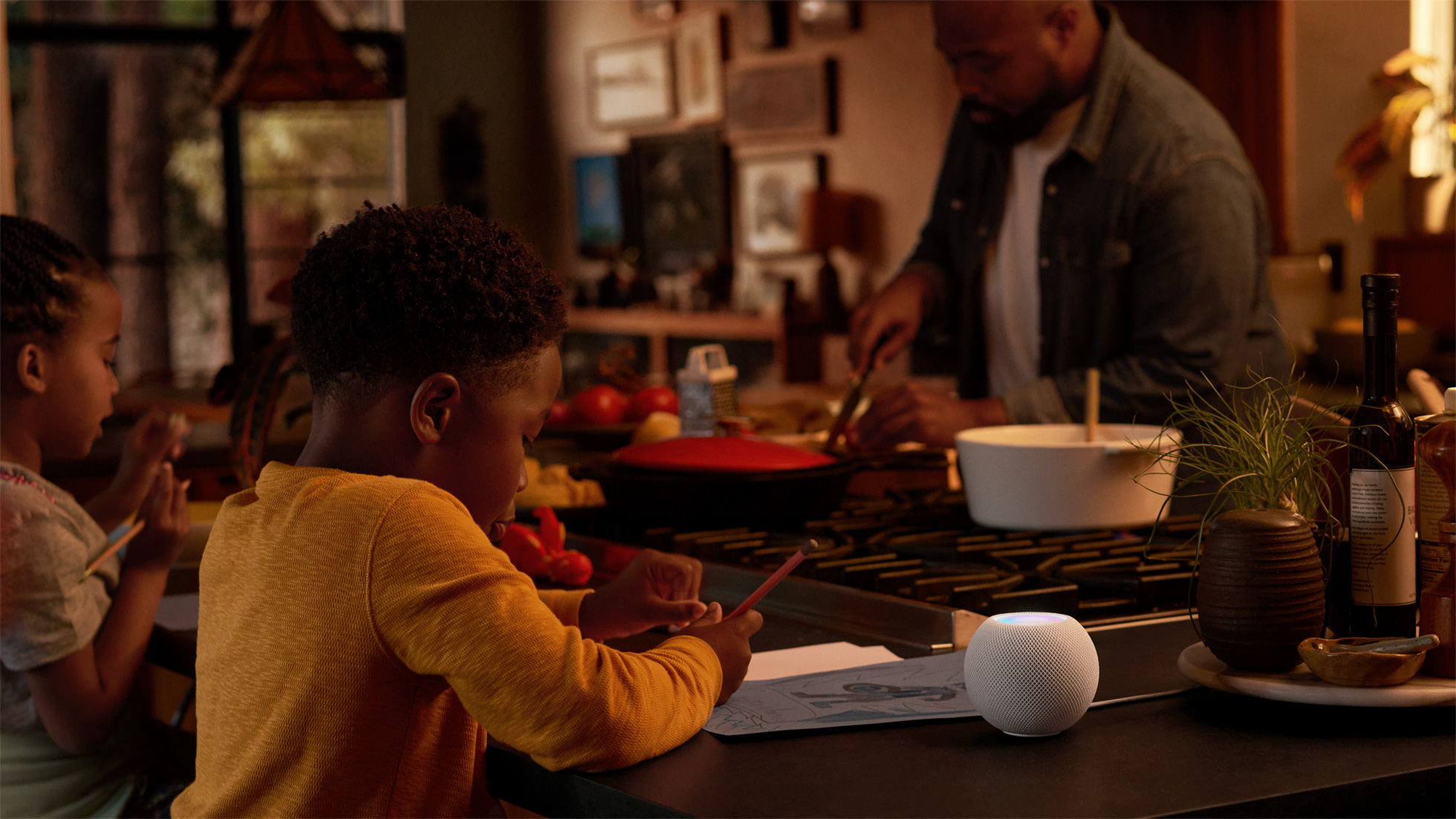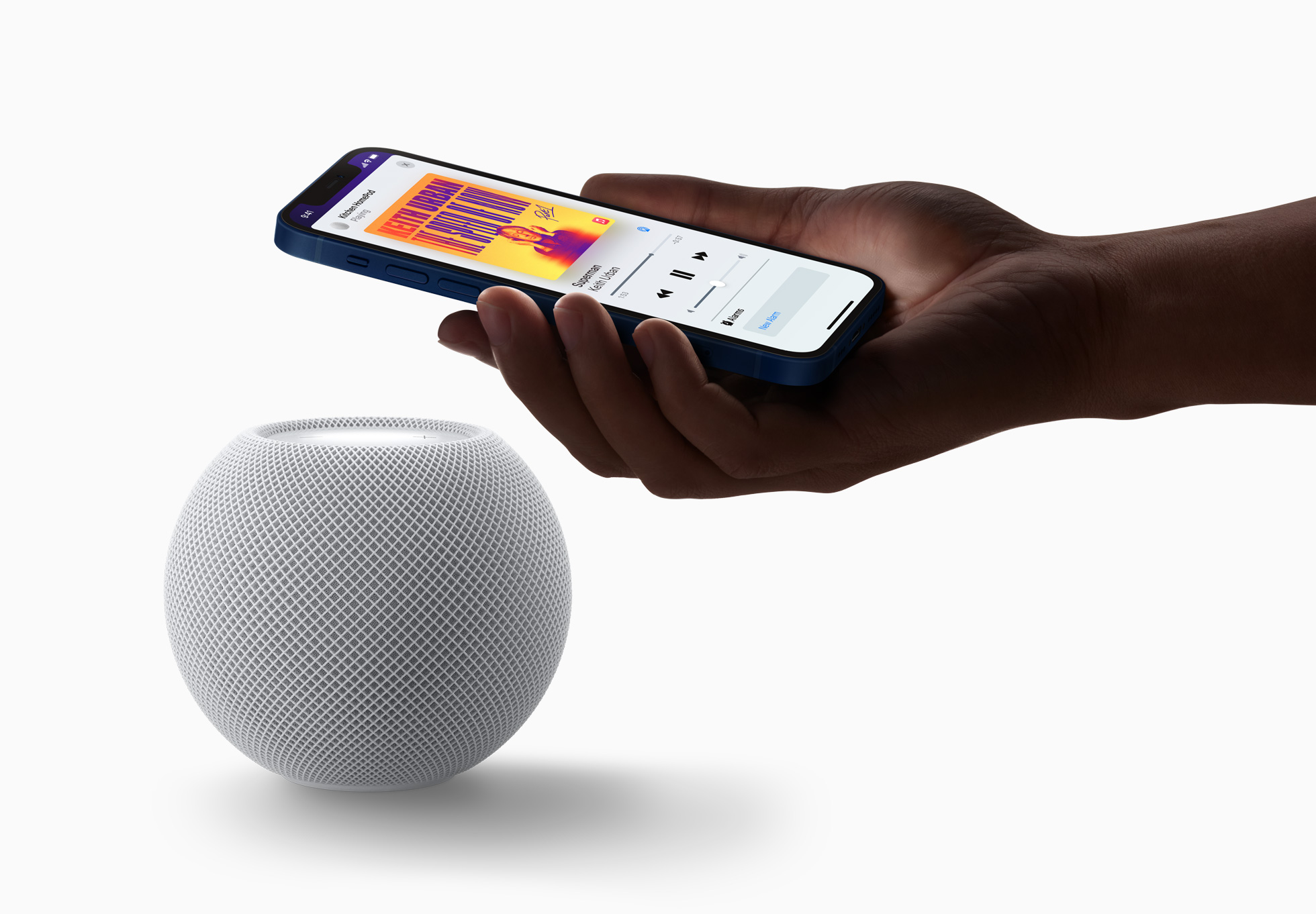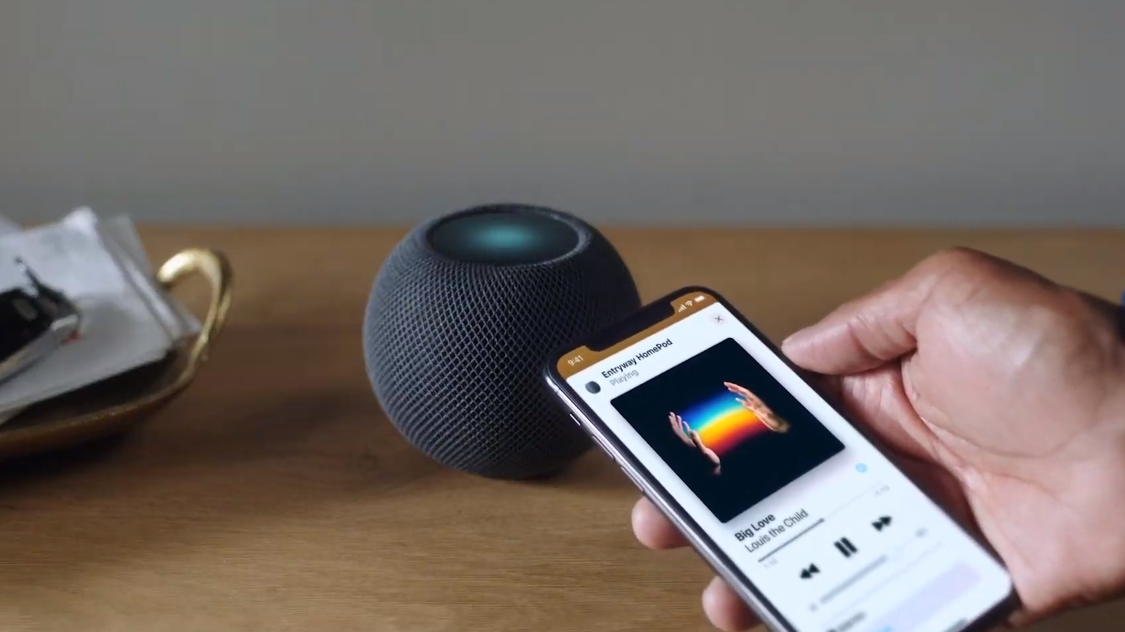Apple HomePod mini vs Apple HomePod: what’s new with the Siri smart speaker?
The Apple HomePod is one of the best-selling smart speakers in the world, and since its release in 2018 it’s represented an alternative to the likes of the Amazon Echo and Google Nest speakers for those who love the Apple ecosystem.
Part of the HomePod's success was down to its fantastic sound quality and understated design – but it wasn’t without shortcomings, and the built-in voice assistant Siri couldn’t compete with the smart home integration offered by Alexa and Google Assistant.
That’s why rumors of a new and improved HomePod were so compelling – and two years on from the original’s release, the company announced the Apple HomePod mini at its iPhone 12 launch in October.
Smaller and cheaper than the original HomePod, the mini is designed to “act as the brain of your smart home” according to Apple, and it comes with an all-new design and nifty features like the ability to cast voice messages to Apple devices – including AirPods – in your home.
So, is it worth upgrading to the HomePod mini if you already have the original Apple smart speaker? Or, if you’re looking to invest in your first wireless speaker, which one should you buy? While we’re yet to test the HomePod mini for ourselves, we’ve taken a look at the specs to help you make an informed decision once the newer speaker is available to buy on November 6.
- Apple HomePod mini release date, price, and features
- Read our Apple HomePod review
- The best smart speakers of 2020
What’s new with the Apple HomePod mini?
The Apple HomePod mini is the long awaited successor to the original HomePod; smaller, cheaper, and coming with enhanced compatibility with the Apple ecosystem, it could be a compelling alternative to its bigger predecessor.
Price
One of the biggest changes with the new HomePod mini compared to its predecessor is its price; it’s set to cost $99 / £99 / AU$149, which is far cheaper than the original HomePod, which cost $349 / £319/ AU$499 when it launched in 2018.
Now that the Apple HomePod is a little older, it can usually be found at a discount – and the launch of the HomePod mini means you can expect some fantastic Apple HomePod deals this Black Friday and Cyber Monday. So, if your heart’s set on the biggest Apple speaker, it’s well worth waiting until November 27 to buy.
The HomePod mini’s low price did come as something of a surprise; after all, Apple isn’t exactly known for being budget-friendly, and it puts it in direct competition with the new Amazon Echo and the Google Nest Audio, which both cost $99.99 / £89.99 / AU$149.
Design
The Apple HomePod mini looks like a squatter version of the HomePod, with a more rounded build that’s pretty similar to the new Amazon Echo.
It’s far smaller than its predecessor at just 3.3 inches tall, but it shares the same wraparound fabric grille and touch-sensitive control panel on the top, and it’s available in the same white and space gray colors.
So, if you’re looking for a compact desk buddy, or a smart speaker that will sit comfortably on your kitchen counter or bedside table, the HomePod mini is probably your best bet.

Audio performance
While we can’t make a true assessment of the HomePod mini’s audio performance without testing it for ourselves, the specs shared by Apple gives us a few clues as to how it could sound compared to the original HomePod.
For starters, its far smaller build means it probably won’t be quite as powerful as the Apple HomePod; in fact, it contains just one driver that acts as a woofer and a tweeter compared to the seven tweeters and separate woofer found inside the larger HomePod. You can almost be certain that the HomePod mini won’t be as bassy or reach as high a level of volume as its predecessor.
Saying that, the new smart speaker contains the Apple S5 chip, which Apple says can "analyze the unique characteristics of the music and apply complex tuning models to optimize loudness, adjust the dynamic range, and control the movement of the driver and passive radiators in real time".
So, the HomePod mini’s audio processing tech may be able to compensate somewhat for its smaller size. Even so, it’s unlikely to be a match for the original HomePod’s beamforming technology, which allows it to automatically adapt its sound output to suit the room it’s placed in.
The original Apple HomePod offered fantastic audio quality – and based on the specs, we don’t think the mini will quite measure up. So, if it’s all about the sound for you, the older HomePod is probably your best bet.
Saying that, you can pair two HomePod minis for stereo sound – and it’s far cheaper to buy two of these than two of the original HomePods.

Connectivity
There are some connectivity features that are coming to the HomePod mini that make it an attractive proposition over the original HomePod; though it’s possible that these features could be shared between both speakers in the future.
The original HomePod offered great compatibility with Apple’s ecosystem, and this is being taken even further by the smaller smart speaker.
For example, when you're listening to music on your phone, you can simply bring your device close to HomePod mini and, according to Apple, "seamlessly hand off the music without missing a beat". The company says visual, audible, and haptic effects when sound transfers from one device to another are coming later this year.
As well as that, you'll get personalized listening suggestions on your iPhone when it's next to your Apple HomePod mini, as well as the ability to control the HomePod without unlocking your phone.
As we said, this feature could feasibly come to the 2018 HomePod via a software update – as we’ve already seen with the HomePod mini’s Intercom feature (more on that later).
Siri and smart home features
The Apple HomePod mini comes with the company’s voice assistant Siri built-in, just like its predecessor – and any upgrades that come with the HomePod mini will be available on the original HomePod, too.
These upgrades include the ability to identify who in your household is speaking to Siri, as well as the ability to tailor music and podcasts to their preferences. Siri Shortcuts created on your iPhone will also be available on the HomePods, which means you can ask it do things like add milk to your grocery list.
Siri can also play ambient sounds like rainfall to help you relax, help you find missing devices with the Find My feature, set music alarms, and deliver web results from voice searches straight to your iPhone.
With Siri built in, you can use the HomePod mini to control your smart home devices, whether you want to turn off your smart lights or change the temperature with your smart thermostat – however, one of the big bugbears with the Apple HomePod is the fact that it just doesn’t have the same capacity for smart home control as Alexa and Google Home devices.

What about the Apple HomePod?
The older Apple HomePod is getting two new features of its own – one shared by the the HomePod mini, and one exclusive to the larger smart speaker.
Intercom
Announced alongside the HomePod mini is a new feature called Intercom, and it’s available on the original HomePod, too. The feature allows the Apple HomePod to double up as an intercom system for your home, letting you send voice messages to other HomePods, iPhones, iPads, CarPlay, and even AirPods. This feature is available for the HomePod mini too, so if you want to create a cheap intercom system and already have a larger HomePod, we’d recommend buying the more budget-friendly Homepod mini to complete your setup.
Dolby Atmos
One new feature that seems to be exclusive to the older HomePod is the ability to function as a surround speaker in 5.1, 7.1, and Dolby Atmos spatial audio – it’s expected to come via a software update in the coming weeks.
It’ll work if you’ve only got a single speaker, but placing one on either side of your TV will enable the full ‘spatial sound’ experience that you get from Atmos, where it places you as an object in the soundscape and fires the noise all around.
If Dolby Atmos is a dealbreaker and you want to use your smart speaker as part of your home cinema setup, we’d recommend going for the older HomePod for this reason – it’s sonic heft and ability to create a virtual surround sound experience means it’s the best speaker for the job.
Of course, the HomePod mini works in stereo if you buy two, so that’s an option if you’re on a stricter budget.

Takeaway
Without testing the HomePod mini thoroughly, we can’t say for sure whether it will be a worthy investment or not – but it’s clear that it won’t share the same audio power as its older sibling.
As a smaller, cheaper version of the Apple HomePod, that’s entirely to be expected – and if sound quality isn’t your main concern, the Homepod mini could well be a great way to control your smart home and listen to some tunes in the process, especially if you’re furnishing a smaller space.
The same is true if you want to add Siri to a smaller room in your home and you already have the original HomePod – the new Intercom feature means your entire home can be connected, and there’s no need to spend the money on the larger HomePod if you’re just looking to bring smart connectivity into an additional room.
However, if sound quality is everything to you, the larger HomePod is likely to be your best bet, thanks to its impressive driver array, clever automatic audio adjustment, and upcoming support for Dolby Atmos.
from TechRadar - All the latest technology news https://ift.tt/3ktBxkK

Comments
Post a Comment